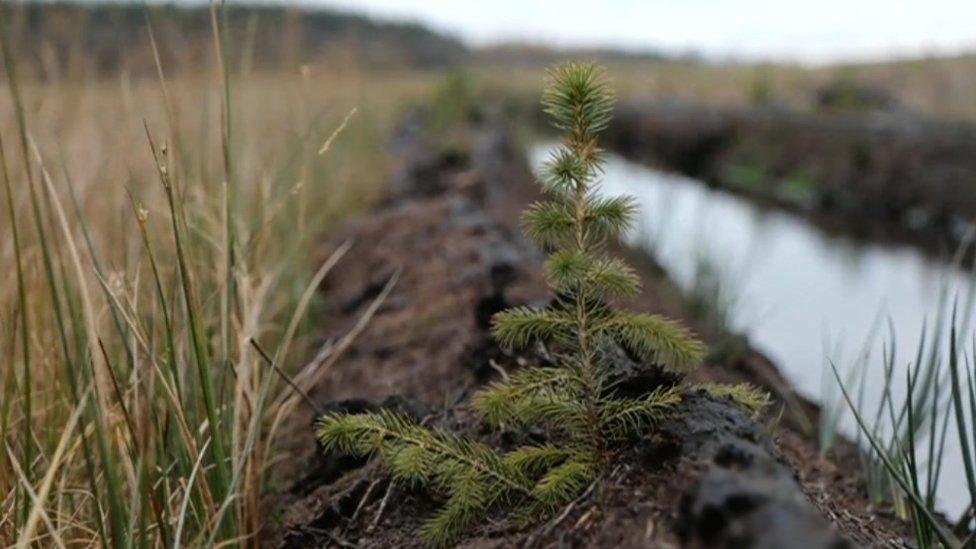Border Mires bog restoration to aid climate change fight
- Published
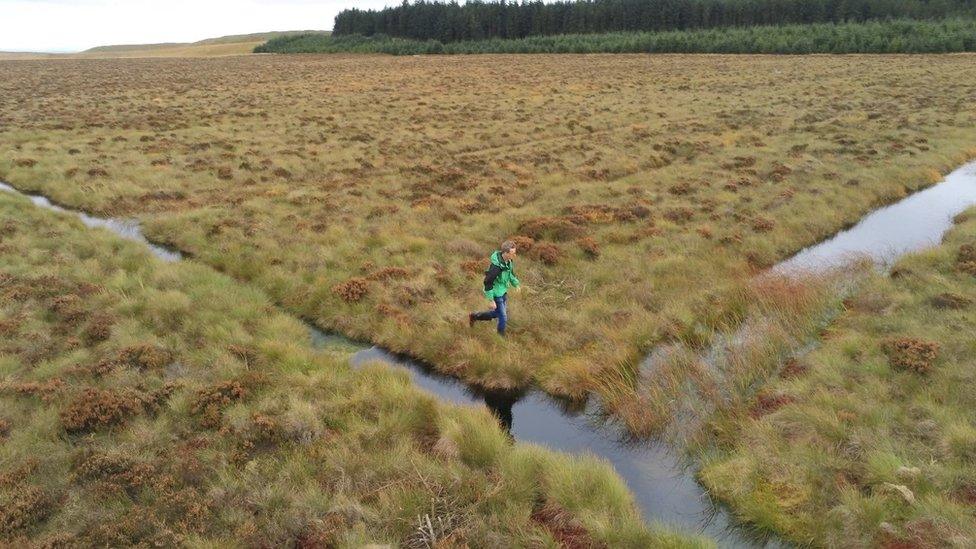
A number of areas have been restored in the conservation scheme which is one of the longest running of its kind
Ancient bog lands labelled some of the UKs most important are set for further restoration work to help tackle climate change and boost biodiversity.
The Border Mires lie between Hadrian's Wall and the Scottish border, spanning both Cumbria and Northumberland.
The peatland, dating back to the last Ice Age, is a vital carbon store in the fight against climate change.
A £1m government grant means trees can be cleared and drainage ditches blocked in nine more areas.
The four-year scheme will help raise the water level, allowing bogs to grow and lay down new peat.
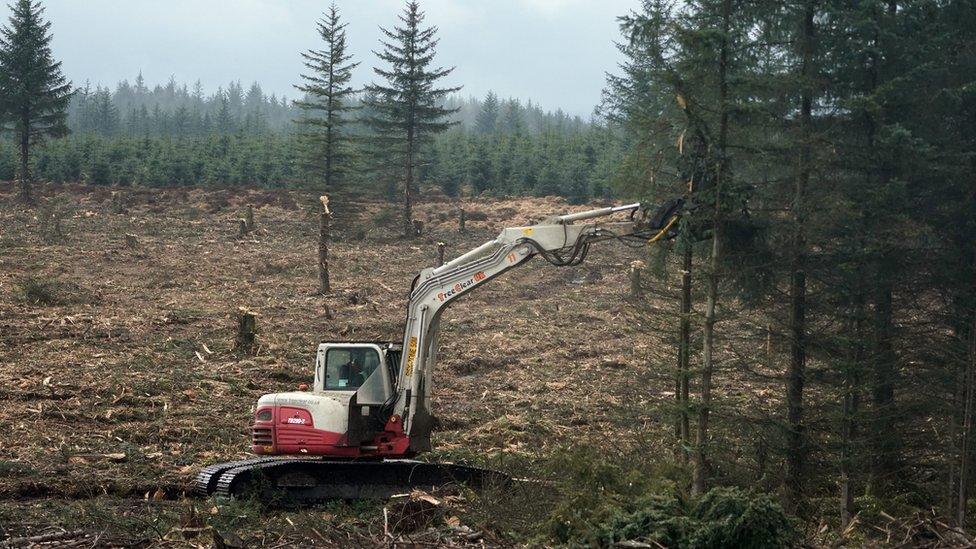
Trees are removed using high-tech, but low impact cutting machines
In the Middle Ages the Border Mires were a refuge for bandits called Moss Troopers and they remain a key habitat for sphagnum moss, bog asphodel, dragonflies and wading birds.
Their importance was recognised in the 1950s and conservation efforts started in the 1970s, making it the longest running environmental scheme of its kind in the UK.
The cash, from the government's Nature for Climate Peatland Grant Scheme, is administered by Natural England, with the work carried out by volunteers and Forestry England rangers.
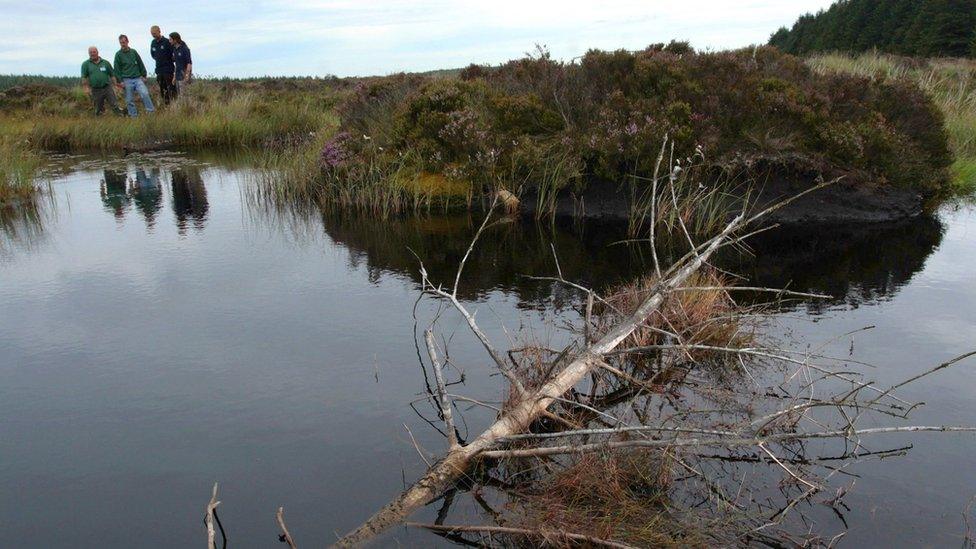
Volunteers and rangers are involved in the restoration work
Kevin May from Forestry England said: "Working with other organisations we have been able to blaze a trail in the long-term restoration of peatland here in the Border Mires.
"With two other large-scale peatland schemes already under our belt the outlook for these historic and fragile habitats is improving all the time."
Marjorie Davy from Natural England said: "There is much work still to do here, but this funding will build on the great work done so far to bring these ecosystems back to good health, and will set up the next chapter in the story of the restoration of this inspirational, unique and naturally carbon-rich landscape."
The largest of the mires included in the scheme will be Butterburn Flow in Cumbria, and the other sites are all in Northumberland.
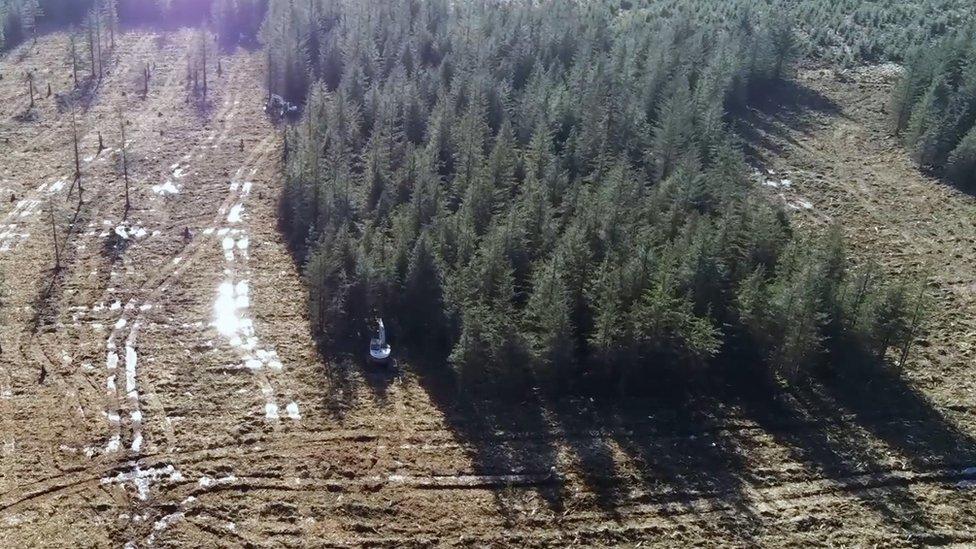

Follow BBC North East & Cumbria on Twitter, external, Facebook, external and Instagram, external. Send your story ideas to northeastandcumbria@bbc.co.uk, external.
Related topics
- Published9 March 2021

- Published17 November 2020
